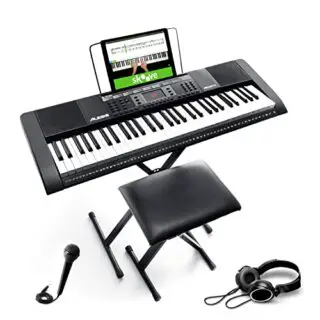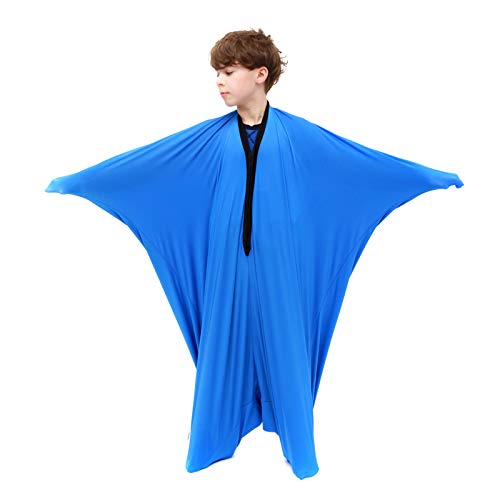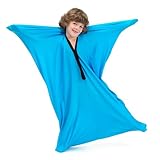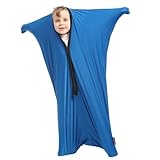Category
Popular
-
 24Pcs Valentine's Day Milky White Press on Nails Medium Almond Fake Nails with Red Heart Design False Nails Valentines Day Cute Acrylic Stick Glue on Nails for Women Girlfriend Gift
$7.99
24Pcs Valentine's Day Milky White Press on Nails Medium Almond Fake Nails with Red Heart Design False Nails Valentines Day Cute Acrylic Stick Glue on Nails for Women Girlfriend Gift
$7.99
-
 24 Pcs Valentines Press on Nails Medium Almond Fake Nails Set French Full Cover False Nails Heart Press on Nails Stiletto Nail Tips Glossy Glue on Nails Acrylic Artificial Stick on Nails for Women
$7.13
24 Pcs Valentines Press on Nails Medium Almond Fake Nails Set French Full Cover False Nails Heart Press on Nails Stiletto Nail Tips Glossy Glue on Nails Acrylic Artificial Stick on Nails for Women
$7.13
-
 GlocalMe G4 Pro 4G LTE Mobile Hotspot Router, with US 8GB & Global 1.1GB Data, 5” Touch Screen LCD Display Portable WiFi Hotspot for Travel, No Contract, SIMFREE, High Speed Pocket WiFi Device (Black)
$169.99
GlocalMe G4 Pro 4G LTE Mobile Hotspot Router, with US 8GB & Global 1.1GB Data, 5” Touch Screen LCD Display Portable WiFi Hotspot for Travel, No Contract, SIMFREE, High Speed Pocket WiFi Device (Black)
$169.99
-
 Alesis Melody 61 Key Keyboard Piano for Beginners with Speakers, Stand, Bench, Headphones, Microphone, Sheet Music Stand, 300 Sounds and Music Lessons
Alesis Melody 61 Key Keyboard Piano for Beginners with Speakers, Stand, Bench, Headphones, Microphone, Sheet Music Stand, 300 Sounds and Music Lessons
$139.99Original price was: $139.99.$123.19Current price is: $123.19. -
 Garden of Life Organic Beet Root Gummies Made from Pectin with Antioxidants, Vitamin C, Vitamin D & B12 for Heart Health & Energy – Beets Gummies – Vegan, Gluten Free, Non GMO, Raspberry, 30 Servings
$20.15
Garden of Life Organic Beet Root Gummies Made from Pectin with Antioxidants, Vitamin C, Vitamin D & B12 for Heart Health & Energy – Beets Gummies – Vegan, Gluten Free, Non GMO, Raspberry, 30 Servings
$20.15
Add Block Title

Key Takeaway:
- Calming and organizing input: The use of body socks provides calming and organizing input for individuals with Sensory Processing Disorder, while also promoting self-awareness.
- Development of motor planning skills: Body Socks target motor planning skills, allowing individuals to better understand where their body is in space and how it moves.
- Versatility in sensory therapy: Body Socks can be incorporated into physical activities, yoga and mindfulness exercises, play-based learning, and can be combined with other sensory tools.
Tired of searching for a way to feel better? Sensory socks are the answer! Don’t just think of them as cozy – they have more to offer. This article will show you the power and sensory sock benefits, and how they can improve wellbeing. Unlock the benefits of sensory socks now!
Introduction to Body Socks for Sensory Input
The Benefits of Using a Sensory Sock
A sensory sock is a stretchy, lycra sack-like piece of fabric with a head opening that provides deep pressure input and proprioceptive feedback to the body. Here are some advantages of using a sensory sock:
- Calming and organizing benefits for individuals with autism or sensory processing difficulties to regulate their emotions and behavior, achieving a calm but alert state.
- Improves body awareness and tactile system by providing dynamic movement-based tasks that help in motor planning skills.
- Minimizes visual input and sensory overload to help in motor planning and provides an environment that is less overwhelming.
- Promotes creative play and provides a fun and therapeutically designed treatment activity to improve motor planning, sensory regulation and emotional regulation.
In addition to the above benefits, sensory socks are lightweight, easy to transport, and available with a velcro-enclosure, making them portable and suitable for home visits or therapy activities at different locations. The Harkla sensory sock is a high-quality product with a lifetime guarantee that can have a positive impact on the therapy bag of tricks.
If you are a traveling therapist or have a child with sensory difficulties, motor delays, or attention issues, do not miss out on the benefits that the sensory sock can offer. Incorporate techniques such as animal movements, choreographed pieces, yoga positions, partner yoga, obstacle courses, balloon volleyball, ball games, scooter boards, roller-racers, swings, suspended equipment, dramatic play, and creative games like spelling or word-wall words, hide and seek, peek-a-boo, Simon says, musical chairs, and more.
Create a sensory safe zone with sensory-friendly canopy, blankets, soft pillows, stuffed animals with preferred textures, and some layered, weighted lap pads, and shoulder wraps to provide calming and organizing input, even during sedentary activities like reading, rope activities, or sitting at a desk. Order your sensory sock today and incorporate it into your therapy sessions creatively for the maximum benefits.
What is a Body Sock?
A sensory-based tool, a body sock is made from stretchy fabric that encloses the entire body, much like a sleeping bag or sensory pod. It offers proprioceptive input by providing resistance and deep pressure to the body. Sensory socks are commercially available and come in various sizes. They help in minimizing visual input while creating a cocoon-like environment that minimizes distractions from the overwhelming environment.
Body socks offer various benefits, such as enhancing the child’s creativity by turning them into different characters with dress-up and dramatic play area possibilities. Using a sensory sock during sedentary activities like spelling words, mother may I, red light-green light, twister, popcorn kernel, relay race course can provide impulses and aid in motor planning.
Interestingly, this stretchy sensation was not initially invented for child development purposes; instead, it started as an activity for people with physical disabilities, specifically cerebral palsy. However, occupational therapy practitioners began using them outside of its original intent and realized they could be useful for many children who have difficulties processing sensations through their surroundings.
How Does a Body Sock Work for Sensory Regulation?
A sensory sock is a tool that can provide pressure and tactile input to one’s proprioceptive system, which can help regulate the nervous system. By using a body sock, individuals can minimize visual input and focus on their body’s movements and sensations.
Body socks are particularly beneficial for children with sensory processing disorder or who struggle with attention and focus. The pressure provided by the sensory sock can help calm the nervous system and increase body awareness. Additionally, the act of moving within the sock encourages gross motor skills development. Incorporating activities like playing wheeled toys or playing red light, green light while wearing a sensory sock can also further stimulate physical development and creative play.
Parents have reported seeing noticeable improvements in their child’s behavior after using a sensory sock on a regular basis. One parent shares that her son had difficulty sitting still for extended periods and engaging in sedentary activities like reading or watching TV was difficult for him. But after introducing him to body socks, his behavior improved greatly, allowing him to sit with ease while he watched his favorite programs. Her daughter loves to spin around in hers, letting her creative side come out, while an unexpected visitor gets entertained as she runs around joyfully wearing it.
Overall, incorporating sensory sock benefits into daily routines can provide numerous benefits for individuals of all ages who struggle with regulation of their nervous systems.
Benefits of Using a Body Sock
Innovative body sox have a range of advantages, especially for those who experience sensory overload. Let’s discuss why a sensory sock may be an excellent investment for you.
- Experience Calming: This product offers a secure touch with even pressure, which helps you calm and/or self-soothe.
- Enhances sleep quality: A sensory sock provides the necessary cozy sensation to help you fall asleep faster and improve your sleep quality.
- Relieves Anxiety: When feeling overwhelmed or anxious, using a sensory sock can aid in relaxation and reducing feelings of anxiety.
- Improved focus: Using a sensory sock during sedentary activities like reading or working can help increase focus and improve performance.
- Reduces meltdowns: A sensory sock can be helpful in reducing meltdowns by providing a calming effect.
The fabric, size, and color of a sensory sock all play a significant role in its effectiveness. However, selecting the right one for your specific needs is essential to experience these benefits fully.
Did you know that sensory socks can also be used as a hideout or an activity that could prove to be a surprise fun escape from a busy day? According to unexpecting visitors, discovering a sensory sock presented a fun and joyful moment in their day.
Calming and Organizing Input
The use of a sensory sack provides regulating input and stimulates the body’s proprioceptors. Proprioceptive input is vital for individuals with sensory needs, allowing them to receive information about their body’s positioning, leading to calming and organizing responses. Research shows that sedentary activities lead to a lack of proprioceptive input, which can cause negative behaviors such as hyperactivity, restlessness, or agitation.
A sensory sock benefits individuals who have difficulty receiving proprioceptive feedback from their bodies in several ways. The deep pressure offered by the sock helps regulate the nervous system by activating receptors in the skin and joints. This results in calming effects helping individuals deal with anxiety and distress better. Using red light while inside the sock also contributes to organizing stimuli for those struggling with attention difficulties.
Many studies show how effective this sedentary activity has become a tool for managing symptoms of Sensory Processing Disorder(SPD) across all age groups; it is also proven beneficial for Autism Spectrum Disorder (ASD) individuals struggling with regulation issues.
True history states that Occupational Therapists (OTs) first used Sensory Socks as an approach to treating sensory processing disorders over 30 years ago but only recently gained mainstream popularity after gaining recognition among parents and caregivers for its effectiveness in providing beneficial stimuli feedback.
Promotes Body Awareness
A sensory sock provides a deep pressure sensation around the body, promoting self-awareness. The sensation helps the user understand their body’s position and movements in space. This increased awareness can help individuals with sensory processing issues as well as those seeking to improve their proprioception.
Using a sensory sock benefits individuals by facilitating spatial perception which aids proper balance and coordination skills development. Moreover, it is an effective tool for calming individuals, reducing anxiety levels by providing a safe environment that soothes them from over-stimulation.
Wearing a sensory sock assists children with ADHD, Autism Spectrum Disorder, and other neurological impairments afflictions to manage sensory overload in social situations or when experiencing stress. It brings changes such as improved movement control, enhanced physical skills and coordination level and proper attention span in users leading to improved work performance.
True story: Rhonda uses sensory socks for her son who has autism. “He can be very impulsive at times and was struggling with his motor skills,” she explains. “As soon as he slipped on the sock, he calmed right down and began exploring its tactile sensation.” Rhonda noticed improvements in her son’s balance, attention span during homework time, and overall movement control after regularly using the socks during exercise sessions too.
Targets Motor Planning Skills
Motor Planning in a Body Sock
For children with sensory processing disorders, improving motor planning skills is critical for everyday life. The use of a body sock promotes motor planning abilities and provides numerous benefits to the child.
Here are some steps the body sock takes to enhance motor planning skills:
- Resisting Movement: The body sock puts resistance on movement, encouraging children to plan their movements before acting.
- Tactile Feedback: Children receive tactile feedback from the fabric of the body sock, which helps them to better understand their body’s position in space.
- Body Awareness: A sense of where the body is in relation to other objects or people creates improved proprioception awareness, which enhances a child’s ability to plan out effective movements.
- Bilateral Coordination: The process of moving both sides of the body together takes practice and encourages motor planning development.
- Motion Planning: Since it goes against one’s natural instincts, using a body sock requires extra effort. This additional effort prompts better motion planning skills overall.
In addition to these benefits, regular use of a sensory sock can lead to improved gross motor performance in areas like balance, coordination, strength, and endurance.
Pro Tip: Allow children ample time to get comfortable within the sensory cocoon-like environment created by the body sock before initiating any activities or therapeutic sessions.
Creative Ways to Use a Body Sock
Paragraph 1 – Discover New Sensations with a Sensory Sock
A sensory sock is a versatile tool that can be used to create unique sensory experiences. From providing calming pressure to promoting body awareness, there are many creative ways to use a sensory sock.
Paragraph 2 – Creative Ways to Enhance Your Sensory Experience
- Create a cozy retreat by using the sensory sock as a calming cocoon.
- Promote body awareness through vestibular input by swinging in a sensory sock.
- Improve balance and coordination by incorporating the sensory sock into an obstacle course.
- Encourage tactile exploration by filling the sensory sock with different textures.
- Use the sensory sock as a replacement for traditional weighted vests to provide calming pressure.
Paragraph 3 – Unique Benefits of a Sensory Sock
A sensory sock is a useful tool for children with sensory difficulties as it allows them to explore and understand their bodies’ movements and sensations in a fun and unique way. Additionally, it can be used to improve body awareness, balance, and coordination, making it an excellent tool for occupational therapy.
Paragraph 4 – Pro Tip
When using a sensory sock, it’s essential to ensure proper supervision and safety. Always use it in a safe and enclosed area, avoid suspending it from high places, and never leave a child unattended while using it.
Physical Activities for Sensory Integration
Physical activities that aid in sensory integration allow individuals to develop sensorimotor skills and improve balance, coordination, and body awareness.
- ‘Body sock’ therapy is a fun and engaging way for children with sensory needs to receive deep pressure input and improve body awareness.
- Swinging or spinning on a platform swing helps individuals integrate vestibular input, which aids in improving balance and spatial orientation.
- Obstacle courses aid in developing motor planning skills, enhance tactile sensitivity, and improve proprioceptive input through gripping and carrying objects.
- Bouncing on a trampoline provides tactile feedback while engaging the vestibular system, allowing individuals to regulate their movements better.
- Sensory bins or tables that include various textures like rice, sand, or beans help improve tactile sensitivity and fine motor skills while providing enjoyable stimulation.
It is essential to maintain focus on the individual’s specific needs while organizing physical activities for sensory integration. Every person responds uniquely to stimuli, so it is critical to ensure that the chosen activity is tailored towards their particular requirements.
For instance, using soft toys while engaging in gross motor skills may be more effective for an individual who struggles with processing auditory stimuli than one who benefits from visual aids.
I once worked with a little girl who was extremely sensitive to touch. We introduced her to finger painting sessions where we diluted the paint into thinner consistencies. She was initially hesitant about touching the paint but gradually became comfortable enough to engage fully. The sessions helped build her confidence and improved her tactile sensitivity significantly.
Yoga and Mindfulness Exercises
- Find a comfortable spot – Choose a quiet and comfortable spot to practice your mindfulness exercises, whether it’s in your living room or outside in a peaceful setting.
- Focus on your breath – Start by taking deep, slow breaths and focus on the sensation of air entering and leaving your body.
- Shift your attention to your body – Once you have focused on your breath, shift your attention to different parts of your body and notice any sensations you may feel.
- Be present – Allow yourself to be completely present in the moment, focusing on what you are experiencing in that moment instead of worrying about the past or future.
- Practice regularly – Like any other exercise, you need to practice yoga and mindfulness exercises regularly for maximum benefit.
It is important to note that yoga and mindfulness exercises are not just physical activities but also require mental discipline. They can help reduce anxiety, stress levels and improve overall quality of life.
Additionally, incorporating sensory socks or other sensory items during these exercises can enhance the experience by providing comfort and grounding sensations.
Don’t miss out on the benefits of regular yoga and mindfulness exercise practices. Start today!
Play-based Learning and Dramatic Play
Children’s development is aided by play-based learning and dramatic play, activities that involve experiential learning and cognitive growth through playing games that build social, emotional, and physical skills. These activities help children to explore their world while fostering creativity, imagination, communication, and collaboration.
Sensory Socks for Enhanced Play-Based Learning
Using sensory socks in play-based environments is ideal for promoting sensory processing skills as they offer a multi-sensory experience which provides feedback to children on their body position and movement while engaging them in active play. This helps to develop self-regulation skills while encouraging balance and coordination.
The Unique Benefits of Sensory Socks
Sensory socks can cultivate imagination by serving as costume pieces- creating an immersive environment that engages children to reimagine scenes from their favorite stories or television shows. In addition to supporting motor skill development, the socks improve the sensory integration system, which contributes toward attentional abilities.
An Opportunity Worth Not Missing
By incorporating sensory socks into your child’s life whether at home or school, you provide a unique opportunity for them to experience play differently – stimulating their senses in a way that unlocks new doors of exploration. Don’t miss out on this chance to give your child the perfect tool for ongoing learning!
Combining Body Socks with Other Sensory Tools
Combining a sensory sock with other sensory tools can enhance the overall sensory experience. Here are five ways to combine body socks with other tools:
- Use a weighted blanket or lap pad with the sensory sock to provide deep pressure stimulation.
- Include calming aromatherapy scents or calming background music to create a relaxing atmosphere.
- Integrate sensory balls or fidget toys to provide additional tactile stimulation.
- Use a therapy swing to incorporate vestibular input with the sensory sock.
- Combine a visual sensory toy, such as a bubble tube or fiber optic lights, to provide additional visual input.
Furthermore, combining different sensory tools can cater to the individual’s sensory needs and preferences, resulting in a more effective sensory experience.
A recent study by the Journal of Autism and Developmental Disorders found that the use of sensory integration therapy, including body socks, had a positive impact on children with autism spectrum disorder.
Weighted Lap Pads and Shoulder Wraps
Weighted Therapy Tools
Weighted therapy tools, such as lap pads and shoulder wraps, are designed to provide sensory input to those who require it. Here’s an overview of their benefits in combination with other sensory tools.
- Improves Focus: By providing deep pressure stimulation, these tools help calm the nervous system and improve concentration.
- Alleviates Anxiety: The use of weighted therapy tools reduces anxiety by promoting a sense of comfort and security.
- Develops Motor Skills: These tools can be used alongside body socks to encourage gross motor skills like coordination and balance.
It’s worth noting that using a combination of sensory tools can have a more significant impact on individuals with Sensory Processing Disorder (SPD). Weighted therapy tools can be used with other sensory equipment such as fidget toys or chewelry. Consider experimenting with various combinations to see what works best for you.
When it comes to sensory processing disorder, there is no one-size-fits-all approach. Each individual has unique needs, preferences, and challenges. Experimenting with different therapeutic tools in combination may assist in creating a customized solution for optimal results.
Don’t let Sensory Processing Disorder limit your ability to focus or complete daily tasks. Explore various weighted therapy options today for improved sensorial integration.
Reading and Homework Strategies
When it comes to techniques for improving reading and homework tasks, there are various strategies that can be utilized. One of the most effective ways is to create a comfortable environment by using an appropriate sensory tool, such as a weighted blanket or a sensory sock.
The use of these sensory tools enables the child to get into a calmer and more focused state, which is essential for better learning outcomes. Additionally, creating a designated workspace with minimal distractions and good lighting also helps improve concentration levels.
Incorporating different writing aids like sticky notes, page markers, highlighters or colored pencils, which help the child note down important information while studying, can also improve their reading and retention capabilities.
Overall, to enhance reading & homework tasks try using sensory tools that calm anxious kids and incorporating writing aids that improve material comprehension and memory retention – allowing them to learn in ways that work best for them.
Conclusion: A Versatile Tool for Sensory Therapy
Sensory sock is a versatile tool for sensory therapy. It can help individuals with sensory processing disorders by providing proprioceptive and tactile stimulation. The sock also promotes body awareness and improves balance and coordination. It can also be used for relaxation and stress relief.
Sensory socks are available in various sizes and materials to suit different preferences. Some socks are made of lycra or spandex material while others are made of soft cotton. The material used in the sock can affect the level of compression and sensory input.
The benefits of sensory socks are not limited to individuals with sensory processing disorders. Athletes can also use sensory socks to improve their performance by increasing body awareness and balance. Furthermore, the sock can help individuals with anxiety or sleeping problems by providing a calming and comforting sensory input.
According to a study conducted by the American Occupational Therapy Association, the use of sensory-based interventions, including sensory socks, can significantly improve motor performance and functional abilities in children with sensory processing disorders.
Portable and Easy to Transport
The sensory sock is an incredibly adaptable and versatile tool for sensory therapy. One of its standout features is its portability, making it an easy-to-transport tool that can be used in a variety of settings.
- The sensory sock’s light weight makes it easy to carry from place to place.
- It can be packed into almost any type of bag, including backpacks, gym bags, and even handbags.
- The compact design takes up minimal space, allowing it to be stored almost anywhere.
- The simple structure means that the sock can be easily assembled and disassembled without any complicated instructions or tools required.
- It is also suitable for use while on-the-go, such as during car rides or flights.
- Due to its portability, the sensory sock allows individuals to access sensory stimulation wherever they go.
In addition to being easy-to-transport, the sensory sock is also highly customizable. With a range of sizes and colors available, users can choose a sock that suits their needs and preferences.
A mother of two children expressed how a sensory sock turned her child’s life around. Her son had trouble sitting still or paying attention in class due to his ADHD. But after using the sensory sock, he was able to focus better during class and even found himself using it as a calming mechanism before bed. The mother remarked that she never expected such profound results from such a seemingly simple tool.
Suitable for a Variety of Ages and Abilities
The versatile nature of sensory socks makes them appealing to individuals of all ages and abilities. With their ability to stimulate various sensory systems, these socks provide sensory feedback that is critical for the development and maintenance of sensorimotor skills. In addition, they offer a comfortable and non-invasive way for individuals with autism, ADHD, or sensory processing disorder to regulate their emotions and behaviors.
Moreover, sensory socks can be used in a variety of settings such as schools, therapy clinics, homes, or public spaces. They are an affordable and effective tool for enhancing motor coordination, balance, proprioception, tactile discrimination, and body awareness. Parents, teachers, occupational therapists can use them as an alternative to traditional therapies or as a complement to other interventions.
Importantly, sensory socks have been shown to improve attention span and reduce hyperactivity in children with ADHD. They also promote relaxation and decrease anxiety levels in individuals with autism spectrum disorder or SPD. Given the benefits of these socks for people of different ages and abilities who struggle with sensory issues or motor challenges, it’s crucial not to miss out on this revolutionary product.
To experience the unique benefits of a sensory sock first-hand and give your loved ones a chance at optimal well-being, consider purchasing one today!
A Valuable Addition to Any Sensory Toolkit
A valuable tool to enhance sensory integration is a sensory sock. It can provide benefits such as body awareness, balance and coordination. The socks come in various textures and sizes, allowing for customization according to individual needs. Wearing a sensory sock before bedtime can also promote relaxation and improve sleep quality.
Apart from the benefits mentioned earlier, sensory socks can improve focus and attention in those with ADHD or Autism Spectrum Disorder. It can also encourage creativity by giving individuals a sense of control over their environment.
The use of sensory socks is not limited to children but adults too; runners can use them as part of their warm-up routine. Incorporating sensory socks into your daily routine has the potential to create positive changes in your overall well-being.
Don’t miss out on the opportunity to experience the benefits of a sensory sock for yourself or a loved one. Include it as part of your Sensory Toolkit today!
Five Facts About the Real Benefits of a Sensory Sock:
- ✅ Sensory socks provide proprioceptive and tactile input, helping to regulate the sensory system. (Source: Understood)
- ✅ Sensory socks can be used as a tool in therapy for individuals with sensory processing disorders, autism, and ADHD. (Source: Harkla)
- ✅ Sensory socks can promote body awareness, balance, and coordination. (Source: Therapy Shoppe)
- ✅ Sensory socks can provide a calming and soothing effect, helping to reduce anxiety and stress. (Source: Your Therapy Source)
- ✅ Sensory socks can be used for both children and adults and come in a variety of sizes and materials. (Source: The Inspired Treehouse)
FAQs about The Real Benefits Of A Sensory Sock?
What are the REAL BENEFITS of a sensory sock?
A sensory sock is a versatile tool that provides multiple benefits. Here are some of the REAL BENEFITS of using a sensory sock:
- Calming effect for children and adults with sensory processing disorders
- Provides deep pressure stimulation, which helps regulate the nervous system
- Improves body awareness and proprioception
- Can enhance concentration and focus
- Encourages gross motor skills development, such as balance and coordination
- Can be used for imaginative play and relaxation
Written by Admin
100% Safe
Secure Shopping
Online Support
Email Us 24/7
Trending Offers
Grab Them Now
Popular Brands
Some Of The Best
Hand Picked
Chosen By Us
Latest Posts


Store Updates










